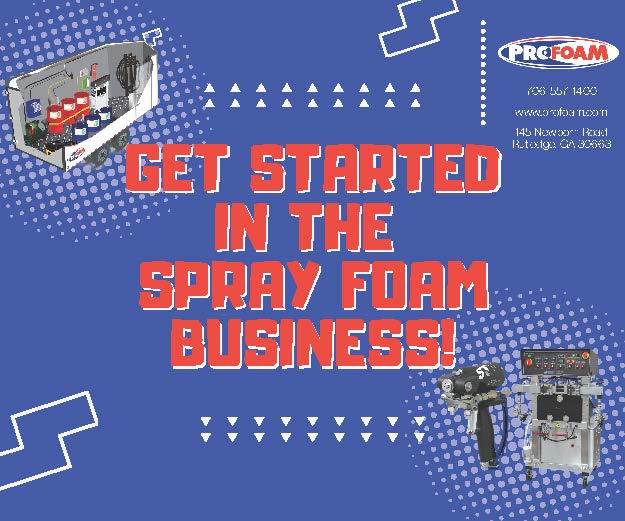
Isocyanate and Polyol ASTM Test Methods
Isocyanate Methods
ASTM Test Methods
Standard Specification for Toluene Diisocyanate (TDI) (ASTM D1786) - This specification covers toluene diisocyanate used as an ingredient in the production of polyurethane cellular materials. The properties included in this specification are those required to characterize toluene diisocyanate. Other requirements may become necessary and will be added as the necessary test methods become available. There is no equivalent ISO standard.
Standard Test Methods for Polyurethane Raw Materials Determination of Specific Gravity of Isocyanates (ASTM D4659) - These test methods determine the specific gravity of toluene-2, 4-diisocyanate and toluene-2, 6-diisocyanate or mixtures of the two. These test methods also are applicable to many other liquids. There is no equivalent ISO standard.
Standard Test Methods for Polyurethane Raw Materials Determination of the Isomer Content of Toluenediisocyanate (ASTM D4660) - These test methods measure the amount of toluene-2, 6-diisocyanate (TDI) in mixtures of the 2, 4- and 2, 6-isomers. Two test methods are required to give accurate results over a broad range of isomer concentrations. There is no equivalent ISO standard.
Standard Test Methods for Polyurethane Raw Materials Determination of Total Chlorine in Isocyanates (ASTM D4661) - These test methods determine the total chlorine content of the mixed isomers of toluene diisocyanate (TDI). The difference between the total chlorine content and the hydrolyzable chlorine content (see ASTM D 4663) is a measure of the amount of o-dichlorobenzene and other ring-substituted chlorinated products that are present. Both procedures are applicable to a variety of organic compounds but the amount of sample used may have to be varied. There is no equivalent ISO standard.
Standard Test Method for Polyurethane Raw Materials Determination of Hydrolyzable Chlorine of Isocyanates (ASTM D4663) - This test method determines the hydrolyzable chlorine content of toluene-2, 4-diisocyanate, toluene-2, 6-diisocyanate, or mixtures of the two. This test method may also be applied to other isocyanates of suitable solubility. The main sources of hydrolyzable chlorine in the isocyanates are carbamoyl chloride and dissolved phosgene. Both of these compounds react with alcohols and water, forming ureas, carbamates, carbon dioxide, and hydrochloric acid. There is no equivalent ISO standard.
Standard Test Method for Polyurethane Raw Materials Determination of APHA Color in Isocyanates (ASTM D4877) - This test method measures the color of clear liquids. It is applicable only to materials whose color-producing bodies have light-absorption characteristics similar to those of the standards used. There is no equivalent ISO standard.
Standard Test Methods for Polyurethane Raw Materials Determination of Viscosity of Crude or Modified Isocyanates (ASTM D4889) - These test methods determine the viscosity of crude or modified isocyanates. It is applicable to products derived from toluene diisocyanate, methylene-bis-(4-phenyl isocyanate), and polymethylene polyphenyl isocyanates. There is no equivalent ISO standard.
Standard Test Methods for Polyurethane Raw Materials Determination of the Isocyanate Content of Aromatic Isocyanates (ASTM D5155) - These test methods measure the isocyanate content of aromatic isocyanates used as polyurethane raw materials.The equivalent ISO standard is ISO 14896.
Standard Test Method for Polyurethane Raw Materials Determination of Acidity in Low-Acidity Aromatic Isocyanates and Polyurethane Prepolymers (ASTM D 5629) - This test method covers the acidity, expressed as ppm of hydrochloric acid, in aromatic isocyanate or polyurethane prepolymer samples of below 100 ppm acidity. The test method is applicable to products derived from toluene diisocyanate and methylene-bis-(4-phenylisocyanate). There is no equivalent ISO standard.
Standard Test Method for Polyurethane Raw Materials: Determination of Acidity in Moderate to High Acidity Aromatic Isocyanates (ASTM D6099) - This test method determines the acidity, expressed as parts per million (ppm) of HCI, in aromatic isocyanate samples of greater than 100-ppm acidity. The test method is applicable to products derived from toluene diisocyanate and methylene-bis-(4-phenylisocyanate). The equivalent ISO standard is ISO 14898, Test Method A.
ISO Methods
Determination of Isocyanate Content (ISO 14896)
Aromatic Isocyanates for Use in the Production of Polyurethane—Determination of Acidity (ISO 14898)
Aromatic Isocyanates for use in the Production of Polyurethanes—Determination of Hydrolysable Chlorine (ISO 15028) - Specifies a method for the determination of the hydrolysable-chlorine content of toluene-2,4-diisocyanate, toluene-2,6-diisocyanate or mixtures of the two. This test method may also be applied to other isocyanates of suitable solubility, such as crude or refined polymeric isocyanates.
Aromatic Isocyanates for Use in the Production of Polyurethanes—Determination of the Isomer Ratio in Toluenediisocyanate (ISO 15064) - Specifies methods for the measurement of toluene-2,6-diisocyanate in mixtures of the 2,4 and 2,6-isomers. Two methods based on infrared spectroscopy are required to give accurate results over a broad range of isomer concentrations. Both methods are based on the quantitative measurement of absorption bands arising from out-of-plane C-H deformation vibrations of the aromatic ring at 810 cm-(superscript: 1) and 782 cm-(superscript: 1).
Polyol Methods
ASTM Test Methods
Standard Test Methods for Hydroxyl Groups Using Acetic Anhydride Acetylation (ASTM E222) - These test methods cover the determination of hydroxyl groups attached to primary and secondary carbon atoms in aliphatic and alicyclic compounds and phenols. There is no equivalent ISO standard.
Standard Test Method for Hydroxyl Groups Using Reaction with p-Toluenesulfonyl Isocyanate (TSI) and Potentiometric Titration with Tetrabutylammonium Hydroxide (ASTM E1899) - This test method covers the determination of hydroxyl groups attached to primary and secondary carbon atoms in aliphatic and cyclic compounds and phenols. It is not suitable for determination of hydroxyl groups attached to tertiary carbon atoms. This test method is applicable to polyacetals, temperature sensitive materials, high solids polymer polyols, and rigid polyols. There is no equivalent ISO standard.
Standard Test Methods for Polyurethane Raw Materials Determination of Primary Hydroxyl Content of Polyether Polyols (ASTM D4273) - Test Method A: Fluorine-19 Nuclear Magnetic Resonance Spectroscopy (fluorine-19 NMR), measures the primary hydroxyl content in ethylene oxide-propylene oxide polyethers used in flexible urethane foams. It is suitable for polyethers with hydroxyl numbers of 24 to 300 and primary hydroxyl percentages of 2 to 98. Test Method B: Carbon-13 Nuclear Magnetic Resonance Spectroscopy (carbon-13 NMR), measures the primary hydroxyl content of ethylene-oxide-propylene oxide polyethers used in preparing flexible foams. It is suitable for polyethers with hydroxyl numbers of 24 to 109 and primary hydroxyl contents of 10 to 90%. There is no equivalent ISO standard.
Standard Test Methods for Testing Polyurethane Raw Materials Determination of Hydroxyl Numbers of Polyols (ASTM D4274) - These test methods measure the hydroxyl groups in polyester and polyether polyols. They also apply to many other hydroxyl-containing substances. The equivalent ISO standard is ISO 14900.
Standard Test Methods for Polyurethane Raw Materials Determination of Acid and Alkalinity Numbers of Polyols (ASTM D4662) - These test methods measure the acidic and basic constituents in polyols and other materials that are soluble in mixtures of toluene and ethyl alcohol. These test methods do not apply to polyethers. There is no equivalent ISO standard.
Standard Test Method for Polyurethane Raw Materials Determination of Specific Gravity of Polyols (ASTM D4669) - This test method measures the specific gravity of polyols using a pycnometer. There is no equivalent ISO standard.
Standard Test Method for Polyurethane Raw Materials Determination of Suspended Matter In Polyols (ASTM D4670) - This test method covers a procedure for visual inspection to determine the presence of insoluble foreign material in polyols. There is no equivalent ISO standard.
Standard Test Method for Polyurethane Raw Materials Determination of Unsaturation of Polyols (ASTM D4671) - This test method measures unsaturation in polyether polyols. The equivalent ISO standard is ISO 17710.
Standard Test Methods for Polyurethane Raw Materials Determination of Water Content of Polyols (ASTM D4672) - These test methods measure water content of polyols and many other organic compounds. The values stated in SI units are to be regarded as the standard. The values given in parentheses are for information only. The equivalent ISO standard is ISO 14897.
Standard Test Methods of Polyurethane Raw Materials Determination of the Polymerized Ethylene Oxide Content of Polyether Polyols (ASTM D4875) - Test Method A: Proton Nuclear Magnetic Resonance Spectroscopy (1H NMR) measures polymerized ethylene oxide (EO) in ethylene oxide-propylene oxide polyethers used in flexible urethane foams and nonfoams. It is suitable for diols made from the commonly used initators and containing EO percentages greater than or equal to six. For triols initiated with glycerin and trimethylol propane, an uncorrected EO value is obtained since both initiators have protons that contribute to the EO measurement. Test Method B: Carbon-13 Nuclear Magnetic Resonance Spectroscopy (13C NMR) measures the polymerized EO content of ethylene oxide-propylene oxide polyethers used in flexible urethane foams and nonfoams. It is suitable for diols and triols made from the commonly used initiators and containing EO percentages greater than or equal to six. There is no equivalent ISO standard.
Standard Test Methods for Polyurethane Raw Materials Determination of Viscosity of Polyols (ASTM D4878) - These test methods (A and B) determine the viscosities of polyols in the range from 10 to 100000 cP at 25°C or at 50°C. Test Method A also applies to more viscous samples that are soluble in -butyl acetate. The values stated in SI units are to be regarded as the standard. There is no equivalent ISO standard.
Standard Test Methods for Polyurethane Raw Materials Determination of Gardner and APHA Color of Polyols (ASTM D4890) - These test methods measure visually the color of clear polyester and polyether liquids. They apply only to materials whose colors have light-absorption characteristics similar to those of the standards. An alternative method is Test Method D1209. There is no equivalent ISO standard.
Standard Practice for Polyurethane Raw Materials: Determining Hydroxyl Number of Polyols by Near Infrared (NIR) Spectroscopy (ASTM D6342) - This standard covers a practice for the determination of hydroxyl numbers of polyols using NIR spectroscopy. Definitions, terms, and calibration techniques are described. Procedures for selecting samples, and collecting and treating data for developing NIR calibrations are outlined. Criteria for building, evaluating, and validating the NIR calibration model are also described. Finally, the procedure for sample handling, data gathering and evaluation are described. The implementation of this standard requires that the NIR spectrometer has been installed in compliance with the manufacturer's specifications. There is no equivalent ISO standard.
Standard Test Method for Polyurethane Raw Materials: Alkalinity in Low-Alkalinity Polyols (Determination of CPR values of Polyols) (ASTM D6437) - This test method covers measuring alkalinity in low-alkalinity (less than 0.002 meq/g basicity) polyols. This alkalinity is often expressed as CPR (controlled polymerization rate) of polyether polyols. This test method is not applicable to amine-based polyols. The values stated in SI units are to be regarded as the standard. The equivalent ISO standard is ISO 14899.
Standard Test Method for Polyurethane Raw Materials: Determination of Basicity in Polyols, Expressed as Percent Nitrogen (ASTM D6979) - This test method measures the basic constituents in polyols that are soluble in glacial acetic acid and reactive with perchloric acid. Samples containing 0.3 - 10 % nitrogen have been evaluated by this method. This test method is applicable to polyether polyols and polyether polyol blends that are used in urethane reactions.
Polyol Methods
Polyols for Use in the Production of Polyurethane—Determination of Water Content (ISO 14897)
Polyols for Use in the Production of Polyurethane—Determination of Basicity (ISO 14899)
Polyols for Use in the Production of Polyurethane—Determination of Hydroxyl Number (ISO 14900)
Polyols for Use in the Production of Polyurethanes—Determination of Hydroxyl Number by NIR Spectroscopy (ISO 15063) - Establishes guidelines for the determination of hydroxyl numbers of polyols using NIR (near infrared) spectroscopy. Definitions and calibration techniques are given. Procedures for selecting calibration materials and for collecting and treating data to develop NIR calibrations are outlined. Criteria for building, evaluating and validating the NIR calibration model are also described. Procedures for sample handling, data gathering and evaluation are included.
Urethane Prepolymer Methods
ASTM Test Methods
Standard Test Method for Isocyanate Groups in Urethane Materials or Prepolymers (ASTM D2572) - This test method covers the determination of the isocyanate group (NCO) content of a urethane intermediate or prepolymer. There is no equivalent ISO standard.
Standard Test Method for Unreacted Toluene Diisocyanates in Urethane Prepolymers and Coating Solutions by Gas Chromatography (ASTM D3432) - This test method covers the determination of free toluene diisocyanates in urethane prepolymers and unpigmented coating solutions. This test method may also be useful for the determination of free isocyanate monomers of other types upon taking precautions to confirm suitability. There is no equivalent ISO standard.
Standard Test Method for Polyurethane Raw Materials Determination of Acidity in Low-Acidity Aromatic Isocyanates and Polyurethane Prepolymers (ASTM D5629) - This test method covers the acidity, expressed as ppm of hydrochloric acid, in aromatic isocyanate or polyurethane prepolymer samples of below 100 ppm acidity. The test method is applicable to products derived from toluene diisocyanate and methylene-bis-(4-phenylisocyanate). The equivalent ISO standard is ISO 14898.
ISO Methods
Aromatic Isocyanates for use in the Production of Polyurethane—Determination of Acidity (ISO 14898)
General Methods
ASTM Test Methods
Standard Test Method for Kinematic Viscosity of Transparent and Opaque Liquids (the Calculation of Dynamic Viscosity) (ASTM D445) - This test method specifies a procedure for the determination of the kinematic viscosity of liquid petroleum products, both transparent and opaque, by measuring the time for a volume of liquid to flow under gravity through a calibrated glass capillary viscometer. The dynamic viscosity can be obtained by multiplying the kinematic viscosity, v, by the density of the liquid. There is no equivalent ISO standard.
Standard Specifications and Operating Instructions for Glass Capillary Kinematic Viscometers (ASTM D446) - This standard gives specifications and operating instructions for glass capillary kinematic viscometers of all the types described in detail. There is no equivalent ISO standard.






